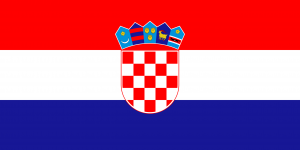Language/Croatian/Grammar/Adjectives-and-Adverbs
Adjectives and adverbs are essential parts of speech in any language, and Croatian is no exception. In this lesson, we will explore the use of adjectives and adverbs in Croatian, including their comparative and superlative forms.
Adjectives
Adjectives in Croatian are words that describe nouns and pronouns. They must agree with the gender, number, and case of the noun they modify.
Gender
Croatian has three genders: masculine, feminine, and neuter. The ending of the adjective changes depending on the gender of the noun it modifies.
- Masculine adjectives typically end in -i, -ak, or -an: lijepi (beautiful), plavi (blue), strašan (terrible)
- Feminine adjectives typically end in -a or -ka: lijepa (beautiful), plava (blue), strašna (terrible)
- Neuter adjectives typically end in -o, -e, or -ko: lijepo (beautiful), plavo (blue), strašno (terrible)
Number
Like gender, adjectives in Croatian must also agree with the number of the noun they modify.
- Singular adjectives do not have any special endings, and are simply formed as usual: lijep (beautiful), plav (blue), strašan (terrible)
- Plural adjectives typically end in -i: lijepi (beautiful), plavi (blue), strašni (terrible)
Case
Finally, adjectives must also agree with the case of the noun they modify. Here are some examples:
- Nominative: Lijepa kuća (beautiful house)
- Accusative: Vidim lijepu kuću (I see a beautiful house)
- Genitive: Nema lijepih kuća (There are no beautiful houses)
Comparative and Superlative Forms
Croatian adjectives can also be compared using comparative and superlative forms. The comparative form is used to compare two things, while the superlative form is used to compare three or more things.
- Comparative: Lijepši (more beautiful)
- Superlative: Najljepši (the most beautiful)
Here are some examples of how to use comparative and superlative forms in Croatian:
- Hrvatska je ljepša od Slovenije. (Croatia is more beautiful than Slovenia.)
- Italija je najljepša od svih. (Italy is the most beautiful of all.)
To form the comparative and superlative forms, take the root of the adjective and add the following endings:
- Comparative: -(i)ji (in parentheses if the root ends in a vowel)
- Superlative: naj- + the comparative form of the adjective
Here is a table showing the comparative and superlative forms of some common Croatian adjectives:
| Croatian | Comparative | Superlative | English | ||||||||||||||||||||||||||||
|---|---|---|---|---|---|---|---|---|---|---|---|---|---|---|---|---|---|---|---|---|---|---|---|---|---|---|---|---|---|---|---|
| lijep | ljepši | najljepši | beautiful | dobar | bolji | najbolji | good | visok | viši | najviši | tall | malen | manji | najmanji | small | jak | jači | najjači | strong | velik | veći | najveći | big | dug | duži | najduži | long | zgodan | zgodniji | najzgodniji | handsome |
Adverbs
Adverbs are words that modify verbs, adjectives, and other adverbs. In Croatian, adverbs are often formed by adding -o to the end of the adjective.
- Adjective: Lijep (beautiful)
- Adverb: Lijepo (beautifully)
Similarly to adjectives, adverbs also have comparative and superlative forms in Croatian:
- Comparative: -(i)je
- Superlative: naj- + the comparative form of the adverb
Here is a table showing the comparative and superlative forms of some common Croatian adverbs:
| Croatian | Comparative | Superlative | English | ||||||||||||||||||||||||
|---|---|---|---|---|---|---|---|---|---|---|---|---|---|---|---|---|---|---|---|---|---|---|---|---|---|---|---|
| brzo | brže | najbrže | fast | lagano | lakše | najlakše | slowly | dugo | duže | najduže | long | jako | jače | najjače | strongly | često | češće | najčešće | often | dobro | bolje | najbolje | well | rado | radije | najradije | gladly |
As you can see, adjectives and adverbs are a complex part of speech in Croatian, but mastering their use is key to achieving fluency in the language.
Conclusion
In this lesson, we have learned about the important role of adjectives and adverbs in Croatian. We have examined the ways in which they must agree with nouns and pronouns in gender, number, and case, and explored how to use comparative and superlative forms. By practicing the examples in this lesson, you will be well on your way to mastering adjectives and adverbs in Croatian!
Sources
- The Croatian psycholinguistic database: Estimates for 6000 nouns ...
- Serbo-Croatian grammar - Wikipedia
- Which types of words change their endings in the Croatian language ...
Related Lessons
- Questions
- How to Use Have
- Advanced Noun and Adjective Declension
- Advanced Verb Tenses
- Verbs and Tenses
- Pronouns
- Word Order and Sentence Structure
- Participles and Gerunds
- Future Tense
- Nouns

